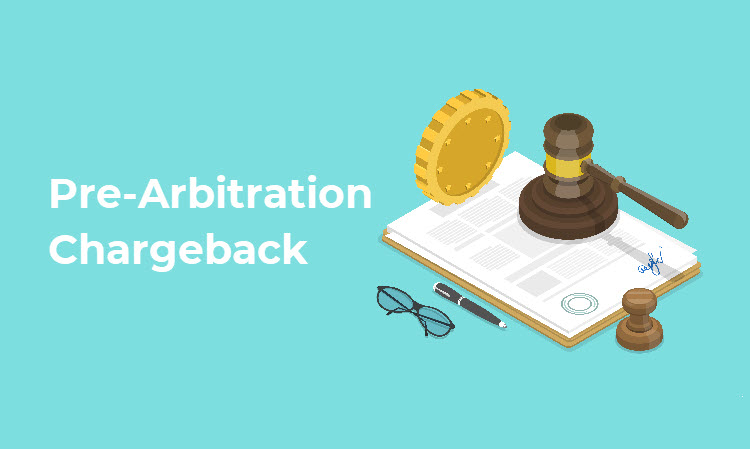Winning a chargeback representment is not always the end of the story when it comes to the chargeback process. Sometimes a chargeback can “come back from the dead” and produce even more expenses for a merchant’s business.
There are two ways a chargeback can continue after a successful representment – pre-arbitration and arbitration.
This article tells you everything you need to know about chargeback pre-arbitration, how it works, and how to avoid it.
What Is Chargeback Pre-arbitration?
After a chargeback is represented, the cardholder (the person who made the disputed payment) can appeal the representment case in pre-arbitration. Pre-arbitration restarts the chargeback process and allows the cardholder and issuing bank to present new facts and circumstances that can reverse the original decision.
Pre-arbitration must be started within 30 days of the original representment for Visa and 45 days for Mastercard. New evidence is sometimes a formal requirement, but it is almost always implicitly necessary because without it the outcome of the dispute will almost certainly be the same as in the original representment case.
At any point during the pre-arbitration process, the merchant can accept liability for the charges and end the proceedings. If the merchant chooses not to accept liability, the credit card company that processed the payment steps in and reaches a final decision.
What Is Chargeback Arbitration?
Arbitration is the last step of the chargeback process. It is the point when a card company like Visa or Mastercard steps in to arbitrate and resolve the dispute between the merchant and cardholder and, by proxy, the issuing and acquiring bank.
After the dispute is closed, the losing side pays the arbitration fees, which vary by network, with Mastercard charging $400, and Visa $500. The high cost of arbitration fees makes going to arbitration cost-effective only if the chargeback is high value or the merchant is sure they will win.
Although card companies come in to act as impartial judges, they have a vested interest in keeping their customers happy, all the while knowing that merchants will keep accepting card payments, even if the outcome of the arbitration is not in their favor.
Pre-Arbitration vs. Second Chargebacks
The terms pre-arbitration, second representment, and second chargeback all refer to the same process and can be used interchangeably.
Visa coined the term pre-arbitration, while Mastercard uses the term second chargeback. Most card processors have followed Visa’s lead, so pre-arbitration is the more popular term, although both are widely used and accepted.
Whatever name they use, financial institutions all have different terms and conditions of pre-arbitration. Additionally, laws and regulations governing the process change frequently.
Why Pre-Arbitration Happens
On the most basic level, pre-arbitration happens because a cardholder wants to contest the result of a chargeback representment they lost. A pre-arbitration is the last chance to settle the issue without involving the card company.
Pre-arbitration can be initiated for several reasons:
- The issuing bank claims the merchant’s evidence does not disprove the chargeback request.
- The cardholder offers new information and evidence.
- The chargeback reason code has changed.
- The cardholder claims the merchant did not adequately disclose the terms, conditions, and return policies.
Chargeback Pre-arbitration Process Explained
Every financial institution has its way of processing chargebacks. For example, American Express does not even have a codified pre-arbitration or arbitration process.
Let us, therefore, examine a simplified model of the chargeback process for Visa.
Visa Chargebacks
Here are the steps of the Visa chargeback process:
The chargeback process begins when the cardholder disputes a transaction, giving reasons to their issuing bank. The issuing bank then informs the acquiring bank, which either resolves the issue or forwards it to the merchant.
The merchant now has two options: they can either accept the chargeback and foot the bill or fight the chargeback in a process called representment, where the merchant re-presents the charge. The merchant must quickly collect evidence on why the charge was valid and send it to the acquiring bank.
The acquiring bank reviews the merchant’s evidence and represents the chargeback to the issuing bank if they judge it as valid.
The acquiring bank can either accept the charges or start a pre-arbitration or arbitration case on behalf of the cardholder.
The acquiring bank receives the pre-arbitration case and forwards it to the merchant. The merchant now has the option of either accepting it or submitting the dispute to Visa for a final decision.
In this final stage of the chargeback process, Visa investigates the case and decides which party is financially responsible for the disputed transaction and the arbitration fee.
Visa’s decision is generally final and legally binding.
Can Merchants Win Pre-Arbitrations?
Although winning pre-arbitrations is possible, most merchants choose not to fight because the risks are often greater than the rewards. If the arbitration fees are greater than the chargeback in question, it does not make sense to risk losing.
Pre-arbitrations are also much more challenging to win than representments because cardholders typically ask for pre-arbitration only when they have convincing new evidence to support their case. On the other hand, the merchant has probably used all the evidence in the representment stage and cannot gather new information.
Deciding whether to fight a chargeback after a representment is a complex cost vs. benefit analysis. It is a bad idea to risk losing an arbitration for a sale that might not even be a fraction of the arbitration fee. A merchant may also need to spend a lot of their time and resources to win the case, and unless the value of the transaction is exceptionally high, it may not be worth it.
How To Prevent Pre-Arbitration Chargebacks?
The best way to avoid pre-arbitration is to win the chargeback dispute during the representment stage. Making a rock-solid case of why the chargeback was invalid from the start minimizes the chance of a case even entering pre-arbitration. If the case has already progressed to pre-arbitration, give your business the best chance to win by following these best practices:
- Meticulously document essential details of transactions from start to finish.
- Review the original evidence presented in the representment and check if there are any errors.
- Try to find additional information that could be useful for proving your case in the dispute. You might have missed something during the original representment.
- Stay informed about the latest rules and regulations on chargebacks.
- Have a quality legal team on standby to act quickly. Outsource chargeback representment to specialists if you do not have an in-house team.
Fighting chargebacks to the bitter end is sometimes necessary. Letting too many chargebacks go unchecked encourages friendly fraud and raises a merchant’s chargeback rate, degrading their reputation with banks and payment processors. This can classify them as high-risk merchants who have to pay higher fees for almost all business transactions.
Conclusion
Pre-arbitration is a complex, expensive, and time-consuming process that involves multiple parties and constantly evolving regulations. Unlike representment, there are high penalties for losing pre-arbitration cases. Merchants who are unsure they will win had best avoid entering into pre-arbitration.



